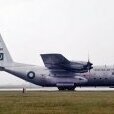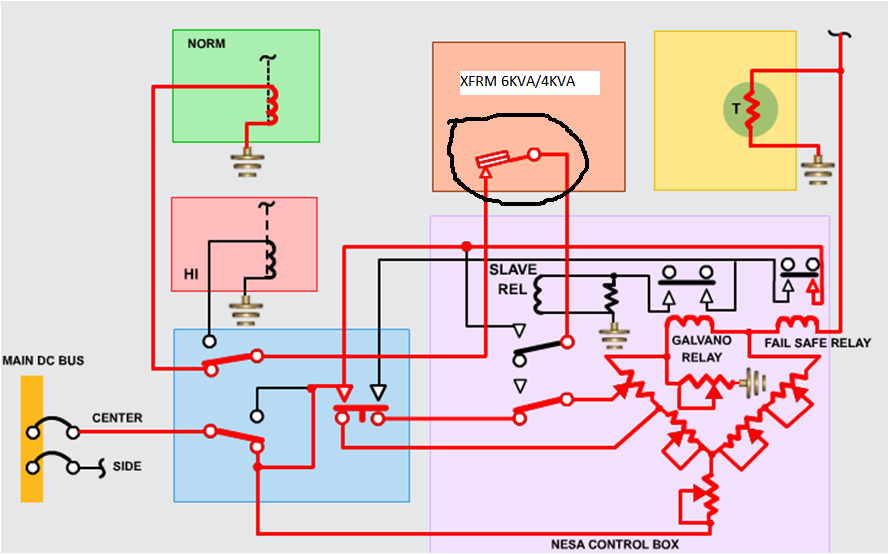-
Posts
381 -
Joined
-
Last visited
-
Days Won
5
Content Type
Profiles
Forums
Store
Gallery
Downloads
Calendar
C-130 Hercules News
Posts posted by munirabbasi
-
-
On 11/1/2019 at 12:30 PM, NATOPS1 said:
Lockheed says 64 +/- 4 psi for the Fuel Level Control Valve pressure relief valve setting.
Thanks
Munir abbasi
-
Hello Fuel System Experts:- At what pressure Refueling level fill Solenoid Valve Surge relief valve open
Regards
Munir Abassi
-
On 12/30/2018 at 9:23 PM, NATOPS1 said:
O got it guess I should read better... No idea, don't know, never knew or don't remember... I do seem to remember this was a question LONG LONG ago and it is not in our level of pubs.
Thanks
Munir Abbasi
-
On 12/22/2018 at 11:10 PM, NATOPS1 said:
The window heat is controlled by Thermistors not thermoswitches so the "temperature" is not the trigger but a resistance value of the thermistor. Each "window" has a code AB, AC cant remember them all, that represents the resistive value of the window; these codes determine how to connect it to your transformer to get the correct operating voltage.
Munir Abbasi


-
9 hours ago, NATOPS1 said:
The sensing unit measures resistance which decreases as the temperature increases so the temperature is not a published exact number; from what I remember the gouge in some groups is 400F.
Thanks
Munir Abbasi
-
Happy christmas day to every world hercules member
Munir Abbasi on behalf of Muslim community of Pakistan
-
 1
1
-
-
Hello world Expertises
What is the temperature of sensing element at which FCU Q 102 Conduct to energise K 101
Munir Abbasi
-
Hello World Expertises
At What temperature ,NESA windshield transformer thermoswitch open the control relay
Munir Abbasi
-
16 hours ago, hehe said:
Normal brake accumulator has a restrictor because of anti-skid system. Emergency does not have anti-skid
Anti-skid plus normal demand of brake application can deplete the accumulator rapidly. The restrictor ensures the utility system pressure goes to the brakes instead of filling the accumulator.
The restrictor is free flow OUT of accumulator but restricted flow IN to accumulator.
Acts like a priority valve for normal brakes.
Thanks
Munir Abbasi
-
Hello Hydraulic Expertise
In normal brake Pressure line near to Normal brake selector valve (100CU IN Accumulator),one way restrictor is installed but in Emergency brake pressure line the restrictor is not installed (50 CU IN Accumulator) both hydraulic lines pressure are same (3000 PSI) what is the reason behind it?
Munir Abbasi
-
5 hours ago, hehe said:
That is a manual override button, similar to override on flap selector valve/landing gear selector valve/ etc...only used that maybe twice that I can remember. Good for troubleshooting a valve that wont close when energized electrically but serves no purpose in the system operation
Thanks
Munir Abbasi
-
17 hours ago, hehe said:
Ahmer is correct. The "relief" for brakes comes from the power brake control valves.
The selector valves do leak internally quite a bit once you get into the 4K+ range but thats not really the purpose of them.
Really depends on what year/model/brake system your aircraft has because there are quite a few differences between the systems (IE: anti-skid valves, 3k or 2030 psi metering valves, parking brake valves, single/multi disk/carbon brakes, etc)
There are also 4 different selector valve part numbers depending on which aircraft it is.
Simple answer, no the selector valves dont have a relief valve
See Image
Munir Abbasi
-
3 hours ago, NATOPS1 said:
High speed anything in the Herc is rare BUT in the case of dives there is the ability to have an increase in airflow through the prop which could cause NTS. This could happen with the throttle at flight idle power off or with power on at any setting above flight idle.
As the airflow increase the prop wants to drive the engine as the air becomes the drive force not the engine power.
IF the NTS fails to increase the blade angle drag will be induced; an outboard prop will have more yaw effect than an inboard prop.
Would the prop pitchlock is a dynamic question and is dependent on the situation but in reality pitchlock prevents the prop from decreasing blade angle therefore again in theory the blade should continue to increase blade angle.
ANYONE have the OLD 1960s "PROPORGANDA" illustrated little book that had all the little "engineers" and "mechanics" drawn in? There are some good explanations on this and other prop engine related topics.
Thanks
Munir Abbasi
-
1 hour ago, NATOPS1 said:
You are missing the point on NTS in this condition. "Hi speed" dives are not a normal profile and this condition (NTS induced by hi speed airflow) is very rare especially with power on.
Flight idle descent is common but airspeed is usually limited to prevent NTS (airframe limitations) We usually see NTS at Flt Idle once we arrive at lower altitudes as the air gets more dense and we add a small amount of power to eliminate the NTS condition.
NTS is a DIRECT input to the feather valve and bypasses the normal governor.
If there is an onset of NTS during a hi speed dive and a failure of the NTS system does not increase blade angle; drag will increase and the aircraft will yaw (original posters question) additionally pitchlock while it could/would come into play if the Rpm INCREASED TO 103.5 it is not a factor because the blade is not trying to decrease and while the normal governor should increase the blade angle to maintain RPM we are discussing failures not normal operations and the feather valve should have already commanded a blade angle increase.
It is important to remember if the NTS continues to increase at aprox -4000 inlb TQ the prop should decouple which would actually be a very bad situation because the increase airflow which caused the NTS would now drive the "pitchlocked" propeller very fast and cause even higher drag.
Thanks
Munir Abbasi
-
1 hour ago, hehe said:
Im confused your question
Are you asking about anti-skid valves or brake selector valves?
What makes you think there is a specific pressure for selector valves?
Brake selector valve relief to return line. The selector valve has builtin relief valve?
Munir Abbasi
-
14 hours ago, dagebow said:
It's located on the Rudder Hydraulic Boost Panel at the aft of the cargo compartment - roughly FS 1020. Red Button on the front of the valve.
Thanks
Munir Abbasi
14 hours ago, dagebow said:It's located on the Rudder Hydraulic Boost Panel at the aft of the cargo compartment - roughly FS 1020. Red Button on the front of the valve.
Thanks
Munir Abbasi
-
Hello Hydraulic expertise
At what pressure Brake selector valves (Normal & emergency) relief the pressure into return line
Munir Abbasi
-
19 hours ago, dagebow said:
I am wondering if anyone can advise when the manual override button located on the Rudder Boost Diverter Valve would be used? We have imagery but no actual technical notes advising of what the intent of the button is other than a manual override. We are guessing it is in case the hydraulic pressure does not change when the flaps are raised/lowered beyond 15% but we are not 100% certain.
This is on a C-130J but was also used on the H and E models.
Thanking for any assistance in advance.
I have seen rudder diverter reducer bypass switch mounted center stand flight pedestal but i could not locate on ruder diverter dpanel
Munir Abbasi
-
On 12/15/2018 at 7:35 PM, DC10FE said:
You might be able to if the locking mechanism on the military version window lines up with the commercial version locking device on the window frame.
Don R.
Thanks
Munir Abbasi
Home of hercules Pakistan
-
5 hours ago, NATOPS1 said:
I have no answer for you. You need to check part numbers and contact a field rep for that.
Thanks
Munir Abbasi
-
On 12/12/2018 at 8:43 PM, NATOPS1 said:
You do not need to remove the wire from the window in fact you should turn off the NESA because if one window is inoperative it can cause the remaining operative windows to over heat. This information should be in your operators manual in the normal procedures section.
Can we replace the swing window of civil version with military version
Munir abbasi
-
9 hours ago, NATOPS1 said:
You do not need to remove the wire from the window in fact you should turn off the NESA because if one window is inoperative it can cause the remaining operative windows to over heat. This information should be in your operators manual in the normal procedures section.
Thanks
Munir Abbasi
-
Just now, DC10FE said:
To get FAA certification, it was required that the civil version had to have 3 positive locking devices on each swing window, whereas the military version has just one locking device. The NESA systems are identical.
Don R.
Thanks
Munir Abbasi
-
1 hour ago, hehe said:
Is the window arcing?
No
Munir Abbasi





BRAKE RELEASE
in C-130 Technical
Posted
Hello Hydraulic expertise
AT 60 KN brake release during landing ,The operation checked o ground found normal with tester .Wiring of the system was checked satisfactory .Anti-skid control box replaced and sufficient hydraulic bleeding carried out but defected was repeated.
Munir Abbasi